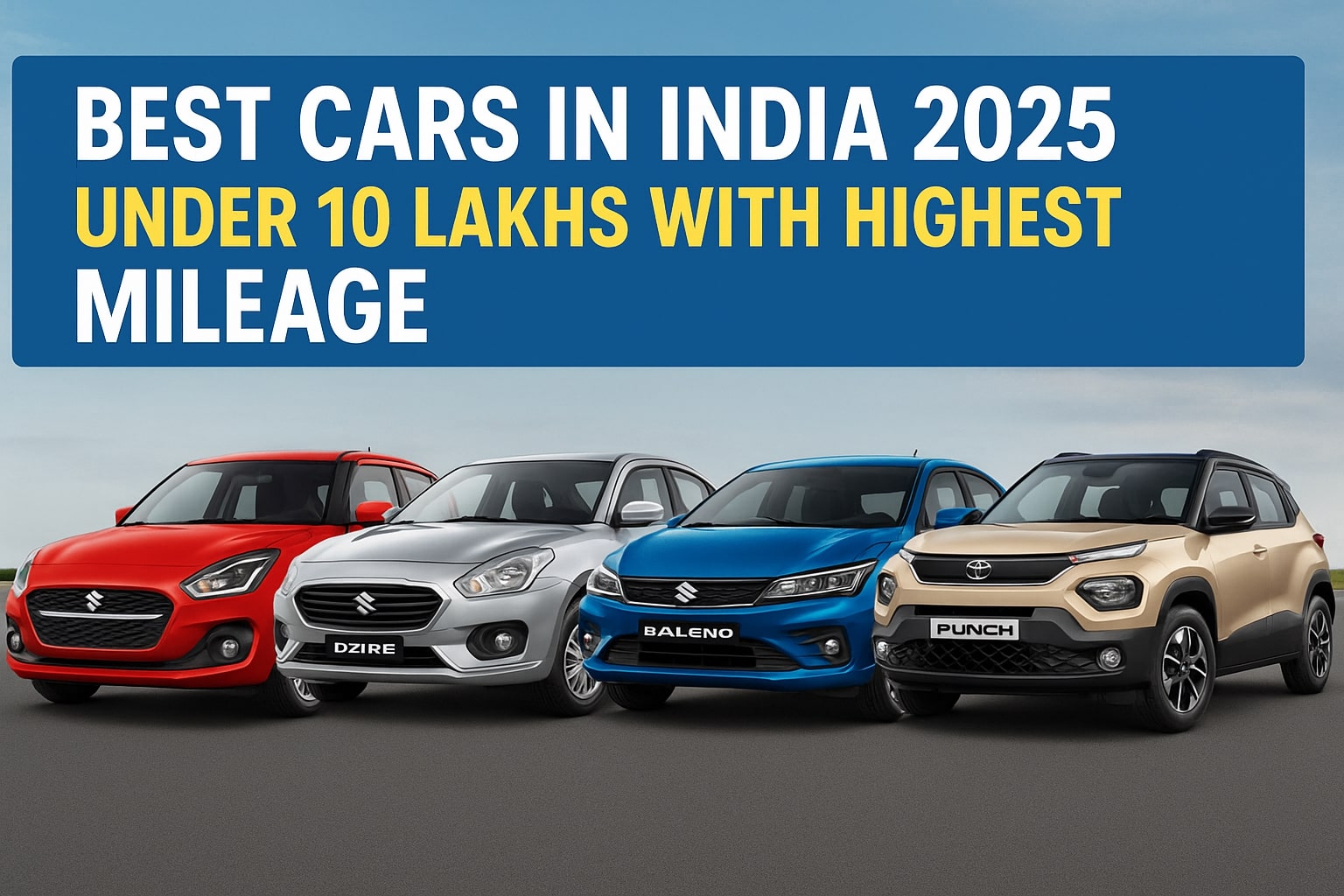lectric vehicles (EVs) are accelerating fast in India. With increasing charging infrastructure, government incentives, and new models launching, 2025 is shaping up to be a breakthrough year for EV adoption. If you’re planning to switch to an electric car, you’ll want to know the real-world range, battery specs, and charging costs. This guide covers the top 10 electric cars in India for 2025, helping you compare features, range, battery size and long-term running cost.
What to Consider When Buying an EV in India (2025)
When evaluating electric cars, focus on:
- Certified range (WLTP or India-specific) and real-world experience.
- Battery capacity (kWh) — affects range & charging cost.
- Charging costs — How much you pay per km based on electricity tariff.
- Charging infrastructure — Home charger availability + public fast-charging network.
- Government incentives / FAME-II / state subsidies that reduce price.
- Vehicle price & running cost — EVs often have lower running cost vs petrol/diesel.
Top 10 Electric Cars in India 2025
1. Tata Nexon EV Prime (2025)
Range: ~425 km (Large battery)
Battery: ~40 kWh
Charging cost: Approx ₹3–4 per km (depending on electricity rate)
Why it tops the list: Strong brand reliability, good charging network, and a practical size for Indian roads.
2. MG Comet EV (2025)
Range: ~305 km
Battery: ~33 kWh
Charging cost: Approx ₹2.5–3 per km
Why: Affordable entry-level EV with city-friendly size and decent range.
3. Tata Tiago EV (2025)
Range: ~350 km
Battery: ~38 kWh
Charging cost: Approx ₹3 per km
Why: Value for money, great after-sales network, strong real-world reviews.
4. BYD Atto 3 (2025)
Range: ~520 km (WLTP)
Battery: ~60 kWh
Charging cost: Approx ₹3.5–4 per km
Why: High range premium EV, still accessible in Indian market.
5. Hyundai Kona Electric (2025)
Range: ~450 km
Battery: ~50 kWh
Charging cost: Approx ₹3.5 per km
Why: Trusted brand, good features, strong charger network.
6. Tata Curvv EV (2025)
Range: ~400 km
Battery: ~45 kWh
Charging cost: Approx ₹3 per km
Why: Upcoming model with modern design and good specs; early adopter benefit.
7. Mahindra XUV400 EV (2025)
Range: ~456 km
Battery: ~50 kWh
Charging cost: Approx ₹3–3.5 per km
Why: Indian brand SUV style EV, strong for families and highway use.
8. Tata Punch EV (2025)
Range: ~330 km
Battery: ~35 kWh
Charging cost: Approx ₹2.8–3 per km
Why: Compact SUV-EV, affordable, practical for urban and semi-urban.
9. Maruti Suzuki eVX (2025)
Range: ~410 km (Expected)
Battery: ~42–45 kWh
Charging cost: Approx ₹3 per km
Why: Strong brand entering EV market; good future value.
10. Honda e:Ny1 EV (2025)
Range: ~410 km
Battery: ~43 kWh
Charging cost: Approx ₹3–3.2 per km
Why: Premium small SUV-EV from Honda; strong build & features.
Charging Cost – How We Calculated
For each model listed:
- Assumed home charging cost ₹8–10 per kWh (varies by state).
- Running cost per km = Electricity cost ÷ real-world km per kWh.
- Example: Battery 40 kWh + range ~400 km → ~0.1 kWh per km → cost ~₹0.8–1 per km in ideal home scenario. Public charging or fast charging cost may be higher.
Real-world note:
Public fast-chargers may cost ₹10–15/kWh or more, so per-km cost may rise to ₹3–₹5 depending on state tariff & charger type.
Why Electric Cars Make Financial Sense in 2025
- Lower running cost: No petrol/diesel, fewer moving parts, less maintenance.
- Government incentives: Many states offer EV purchase subsidies, reduced road tax.
- Better resale value: Early adopters will gain as used EV market grows.
- Better driving experience: Instant torque, quiet cabin, no gear-shift hassles.
Tips Before Buying an EV
- Check the actual real-world range, not just claimed.
- Home charging feasibility — ensure you have 15-20 A or 32 A socket + proper wiring.
- Public charger network near your locality and highway routes.
- Battery warranty & degradation policy — some manufacturers offer 8-10 years warranty.
- Incentives checklist — check your state’s EV policy (Maharashtra, Gujarat, Karnataka, etc.).
- Resale value & after-sales support — early models may have limited spares; choose brands with network.
Conclusion
If you’re looking to leap into an electric car in India in 2025, the top 10 models above are strong choices when it comes to range, battery capacity and charging cost. From premium high-range EVs like BYD Atto 3 to affordable compact models like MG Comet EV and Tata Punch EV — there’s something for every budget and usage pattern.
Switching to an EV now not only reduces your fuel expense significantly but also positions you ahead in the evolving Indian automotive ecosystem. With state incentives, better charger availability and a growing eco-friendly mindset, the time to go electric is now.




